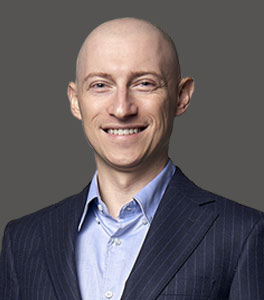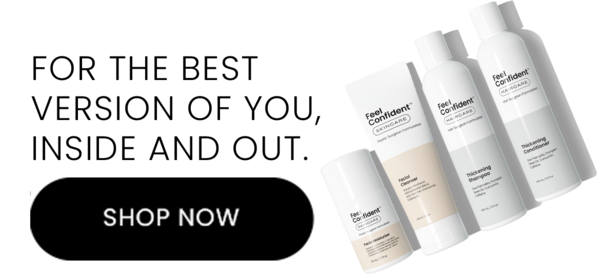

Non-surgical facelift is a procedure that restores lost volume and provides a lift to facial structures. City Facial Plastics, located in Manhattan, NYC, addresses the volume deficit and helps to restore tissues to a more natural position using liquid facelift options. Dr. Gary Linkov is a board-certified plastic surgeon in New York City who offers a combination of treatments for a non-surgical facelift to rejuvenate the facial appearance.


A non-surgical facelift, also called a liquid facelift, involves creating the illusion of a facelift without surgery. As a general rule, the results are usually less permanent than a well-performed facelift. The benefits are reduced downtime and less upfront cost. There is also less overall risk of complications with this procedure. Some patients are not able to get surgery due to ongoing blood thinners, for example, but may still be able to benefit from some less invasive non-surgical facelift options.
As we age, the face loses volume and sags from the effects of gravity. The goals of facial rejuvenation are to replace lost volume and to provide a lift to facial structures. Historically, surgery was the only option to lift the tissues. Now we have many ways of both addressing the volume deficit and helping to restore tissues to a more natural position using non-surgical modalities.
A good candidate for a non-surgical facelift in UES, Manhattan is similar to someone seeking a surgical facelift and these signs include:
I met Dr. Linkov for a consultation. He spent quality time with me, going over what I was interested in having done and the best ways to achieve that. He has excellent rapport with clients along with high quality training and education. I wanted to start with some fillers to fill out my lips in certain places and did 3 areas of Jeuveau. His touch was so painless and I did not have any bruising whatsoever. I already see results and his filler placement was done with such perfection. I’m so happy with his work. I will be having a neck and lower face lift in the fall and I will only trust his expertise and hands. He really made me feel cared for, comfortable and valued. I highly recommend seeing Dr. Gary Linkov.
L D
A liquid facelift targets the following facial areas:
The concept of a non-surgical facelift is to generally use a combination of treatment modalities to restore facial volume and provide some degree of tissue lift. The following are the currently available modalities and how they are used.
Filler is used to restore volume and provide lift. There are off-the-shelf and from the body (autologous) options for filler. The most common types of filler used today are made of hyaluronic acid, which is a naturally occurring substance. Examples include Restylane and Juvederm. When injected into different parts of the face it lasts 6 months to 2 years. The best part of hyaluronic acid-based fillers is that they are reversible.
Popular areas to fill include lateral cheeks (non-surgical cheek lift), nasolabial folds, and along the jawline. Another option is fat transfer, which is taken from one’s own body, processed, and injected into parts of the face. About 40% of the fat survives and can last for many years. Additionally, the stem cells in the fat can help improve skin quality as well. Disadvantages of filler include risk of vascular occlusion and distorting facial proportions if overdone.
Neurotoxins, such as Botox and Jeuveau, can provide tissue lift if used in certain areas. For example, placing it into the DAO, or depressor anguli oris, near the jawline is an excellent way to give a temporary lift to the corners of the mouth. The results can last up to 3-6 months. The exact type of neurotoxin used to achieve the best non-surgical facelift depends on patient and doctor preferences.
Threads are primarily used to lift tissue. Results can last up to one year. Historically threads were made of a permanent material which created many complications. Nowadays, they are made of dissolvable material, same as sutures, and are available in many configurations. They are placed under the skin in a minimally invasive approach and may be a preferred liquid facelift option for some patients.
Kybella (deoxycholic acid) and Coolsculpting are ways to reduce the double chin, refine the jawline, and provide a non-surgical facelift and neck lift. They work by chemically melting fat and destroying fat by cooling, respectively. Numerous sessions are often needed and the results may take many months to show.
An FDA approved device called ultherapy is marketed to lift the skin on the neck and chin. Ultherapy uses microfocused ultrasound to lift and tighten loose skin over time. Some patients find that they lose significant facial fat after treatments. Also, the treatment tends to be painful and is therefore avoided by many providers and patients.
One of the newest methods of non-surgical facelift and neck lift is using various radiofrequency (RF) devices with or without microneedling. Devices such as Thermi, Profound and Facetite use RF energy to heat the layers under the skin in order to encourage the production of more collagen. The skin can then contract and lift. Some of these devices are partially inserted under the skin and others work on the surface only. The degree of applied heat is closely monitored though burns have been reported. Microneedling performed at the same time can also address changes to the skin texture.
Plasma refers to the use of a plasma pen to tighten and lift the skin’s surface. Plasma is a type of gas, and the plasma pen creates an electrical discharge to release this gas onto the skin in a grid-like fashion. Pin-point burn marks initially appear on the skin, however over several weeks start to fade. During this time, the skin in the treated area becomes tighter, therefore resulting in a somewhat raised appearance. Results are temporary but may last for years.
Facial exercises, such as face yoga and face gym, have been touted as a way to tighten, tone, and lift the facial skin. However, there is no strong research to support these claims. Any mechanical lift that happens during these sessions is very short-lived.
The chart below summarizes the main effects of non-surgical facelift modalities on effectively reversing the aging process:
| Non-surgical Facelift Modality | Volume | Lift |
| Filler | ✓ | ✓ |
| Neurotoxin | ✗ | ✓ |
| Threads | ✗ | ✓ |
| Fat reduction | ✗ | ✓ |
| Ultrasound | ✗ | ✓ |
| Radiofrequency | ✗ | ✓ |
| Plasma | ✗ | ✓ |
| Face Exercise | ✗ | ✗ |
There are a few steps you should take before the procedure in order to get the best results. These steps include:
Non-surgical facelift is performed with the patient awake. You may be provided with an oral medication to help relax during the procedure. Depending on the exact treatment modality, a topical anesthetic ointment or injectable local anesthetic such as lidocaine may be used to numb the area in preparation for the treatment. Treatment time is anywhere from 10 minutes for simple neurotoxin injections up to 2 hours for certain radiofrequency treatments.
Though many offices promise no downtime from any liquid facelifts this is often not the case. Redness, bruising, and swelling are possibilities and can last from hours to 2 weeks depending on the type of treatment. Pain is usually mild to moderate and resolves within minutes to days, again depending on the type of the procedure. Applying ice to the treated areas may help with swelling in the first few days.
The benefits of a non-surgical facelift are sometimes immediate, as in the case with fillers. Other times, it may take months to see improvement such as with radiofrequency or Kybella. Speak to your doctor before the treatment about the anticipated recovery and when to expect to see the final result. Doing so will put your mind at ease and will allow you to make the best decision possible as to which kind of treatment is right for you.
The risks and complications of a non-surgical facelift depend largely on the exact type of treatment but can be summarized as:
Even though it is “non-surgical,” there is potential for serious complications when dealing with the face. Do not be fooled into thinking that nothing bad can happen. Just as you would consider surgical risks, please consider the real risk of a non-surgical facelift when making a treatment decision.
The main alternative to a non-surgical facelift is a surgical facelift or a mini facelift. The trade-off is that surgery usually carries more downtime but results in a longer-lasting solution. Additionally, surgical facelift surgery has the potential to create a more natural appearance than other options. Cost is another difference in that surgical facelift may be more expensive upfront but the added cost of all non-surgical treatments over time may ultimately be as much if not more expensive than a surgical facelift.
A non-surgical facelift can be very effective if the correct procedure, or series of procedures, is selected. No single treatment modality is best. It is all about picking the right combination of treatments that achieves the patient’s goals in the safest way possible. Most doctors do not offer every liquid facelift treatment modality, but an honest doctor will properly explain your options and refer you to someone else if the ideal treatment for you is not available in their office.
Patients often search for the best, plastic surgeon in NYC. Dr. Gary Linkov is a board-certified facial plastic surgeon in Midtown, Manhattan specializing in non-surgical and surgical facial aesthetics. Dr. Linkov has taught facial injectables to many other doctors through courses in NYC under the face training centers organization in Chelsea. Dr. Linkov delivers safe, consistent, and natural results to each one of his facial injectable patients.
You can view before and after photos of Dr. Linkov’s patients below:
If you want to give your face a youthful makeover, consider a non-surgical facelift at City Facial Plastics located in Manhattan’s Upper East Side. Contact our office to schedule your consultation with the best-in-class facial plastic surgeon in New York Dr. Linkov. Find out the best solutions to rejuvenate your face and neck appearance.
Dr. Linkov is a great guy and is very knowledgeable. When it comes to FUE (including body hair transplant), it’s all about the experience of the doctor and technicians. Dr. Linkov has a very experienced team that allowed me to fully recover in 6 days.

Dr. Linkov is a double board-certified by the American Academy of Facial Plastic and Reconstructive Surgery and the American Board of Otolaryngology-Head & Neck Surgery. A native of New York, Dr. Linkov graduated as a salutatorian from Cornell University and received his Medical Degree at Columbia University College of Physicians and Surgeons. Dr. Linkov conducted advanced head and neck cancer research at the world-renowned Memorial Sloan Kettering Cancer Center. Dr. Linkov is a former Adjunct Assistant Professor at New York University (NYU), where he taught Rhinoplasty.
Dr. Linkov is a top-rated facial plastic surgeon in New York who specializes in lip lift, facelift, rhinoplasty, and hair transplant. He has been named one of the top 5 lip lift surgeons in the United States, is listed in the prestigious SuperDoctors New York™ registry, and has appeared on the Dr. Oz Show, where he discussed the state-of-the-art hair transplantation procedure.


City Facial Plastics 150 E 56th St, #1AB, New York, NY 10022 (212) 439-5177